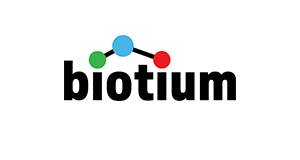CD81 / TAPA-1 (C81/2885R), CF740 conjugate, 0.1mg/mL
CD81 / TAPA-1 (C81/2885R), CF740 conjugate, 0.1mg/mL
Artikelnummer
BTMBNC742885-100
Verpackungseinheit
100 uL
Hersteller
Biotium
Verfügbarkeit:
wird geladen...
Preis wird geladen...
Description: This antibody recognizes a protein of 26 kDa, identified as CD81 (Workshop VI; Code CD81.1). CD81 has a very broad cellular distribution, being expressed on T- and B-lymphocytes, NK cells, thymocytes, eosinophils, fibroblasts, epithelial and endothelial cells. Neutrophils, erythrocytes and platelets are negative, while monocytes are variably positive. CD81 is a member of a family of tetraspanin transmembrane proteins, including CD9, CD37, CD53, CD63, and CD82. It associates with CD19, CD21, Leu 13, and integrins on cell membrane and is involved in signal transduction in B lymphocyte development and cell adhesion. CD81 also acts as a receptor for the envelope protein E2 of chronic hepatitis C virus. Antibodies to CD81 have anti-proliferative effects on different lymphoid cell lines, particularly those derived from large cell lymphomas.Primary antibodies are available purified, or with a selection of fluorescent CF® Dyes and other labels. CF® Dyes offer exceptional brightness and photostability. Note: Conjugates of blue fluorescent dyes like CF®405S and CF®405M are not recommended for detecting low abundance targets, because blue dyes have lower fluorescence and can give higher non-specific background than other dye colors.
Product origin: Animal - Oryctolagus cuniculus (domestic rabbit), Bos taurus (bovine)
Conjugate: CF740
Concentration: 0.1 mg/mL
Storage buffer: PBS, 0.1% rBSA, 0.05% azide
Clone: C81/2885R
Immunogen: B-Cell line derived from a Burkitt lymphoma
Antibody Reactivity: CD81/TAPA-1
Entrez Gene ID: 975
Z-Antibody Applications: Exosome staining (verified)/Flow, surface (verified)/IHC, FFPE (verified)
Verified AB Applications: Exosome staining (verified)/Flow (surface) (verified)/IHC (FFPE) (verified)
Antibody Application Notes: Higher concentration may be required for direct detection using primary antibody conjugates than for indirect detection with secondary antibody/Immunohistology (formalin): 2-4 ug/mL for 30 minutes at RT/Staining of formalin-fixed tissues requires boiling tissue sections in 10 mM Tris with 1 mM EDTA pH 9.0 for 10-20 minutes followed by cooling at RT for 20 minutes/Optimal dilution for a specific application should be determined by user
Product origin: Animal - Oryctolagus cuniculus (domestic rabbit), Bos taurus (bovine)
Conjugate: CF740
Concentration: 0.1 mg/mL
Storage buffer: PBS, 0.1% rBSA, 0.05% azide
Clone: C81/2885R
Immunogen: B-Cell line derived from a Burkitt lymphoma
Antibody Reactivity: CD81/TAPA-1
Entrez Gene ID: 975
Z-Antibody Applications: Exosome staining (verified)/Flow, surface (verified)/IHC, FFPE (verified)
Verified AB Applications: Exosome staining (verified)/Flow (surface) (verified)/IHC (FFPE) (verified)
Antibody Application Notes: Higher concentration may be required for direct detection using primary antibody conjugates than for indirect detection with secondary antibody/Immunohistology (formalin): 2-4 ug/mL for 30 minutes at RT/Staining of formalin-fixed tissues requires boiling tissue sections in 10 mM Tris with 1 mM EDTA pH 9.0 for 10-20 minutes followed by cooling at RT for 20 minutes/Optimal dilution for a specific application should be determined by user
| Artikelnummer | BTMBNC742885-100 |
|---|---|
| Hersteller | Biotium |
| Hersteller Artikelnummer | BNC742885-100 |
| Verpackungseinheit | 100 uL |
| Mengeneinheit | STK |
| Reaktivität | Human, Mouse (Murine), Rat (Rattus) |
| Klonalität | Recombinant |
| Methode | Flow Cytometry, Immunohistochemistry, Exosome Staining |
| Isotyp | IgG |
| Wirt | Rabbit |
| Konjugat | Conjugated, CF740 |
| Produktinformation (PDF) | Download |
| MSDS (PDF) | Download |

 English
English







